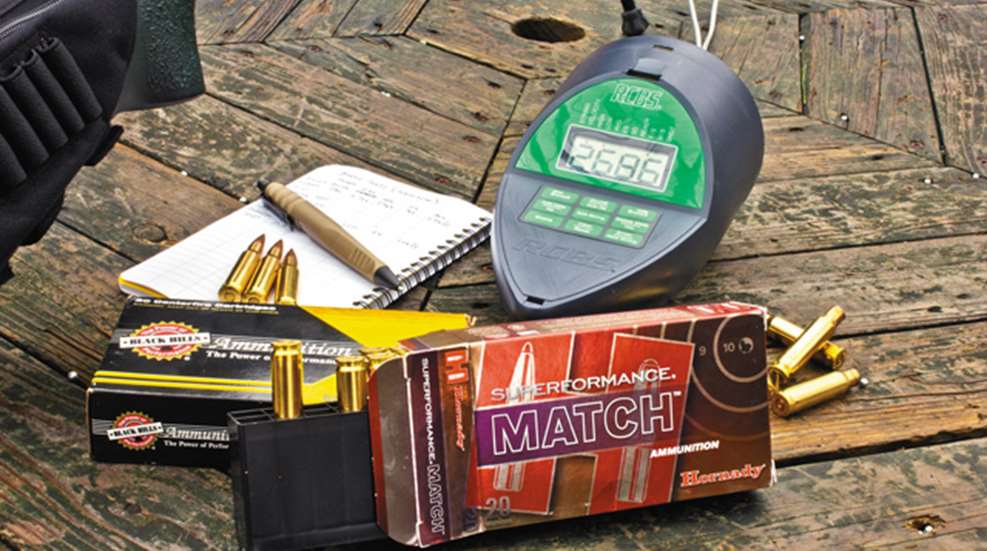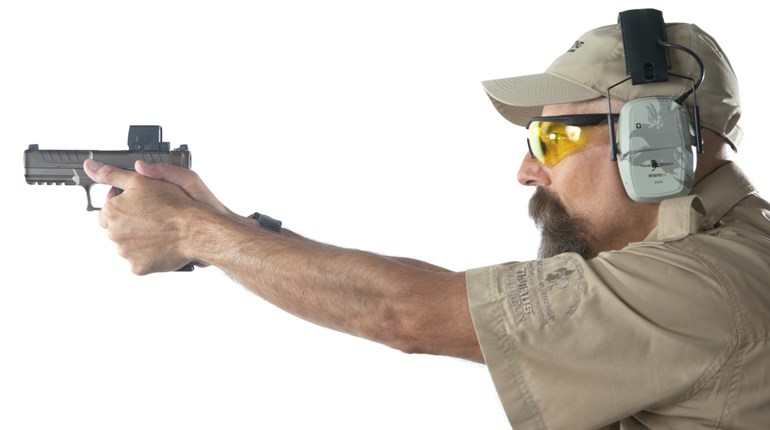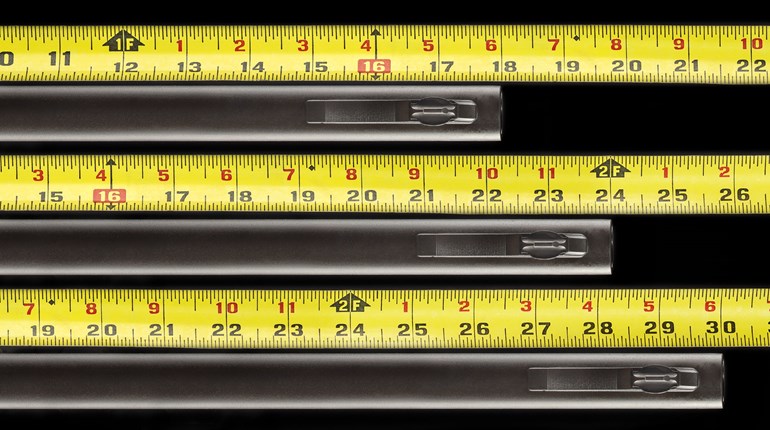
You must also be able to judge distance. A laser rangefinder simplifies range estimation, but you won't always have one or it won't always be able to get a reading. So, estimating range matters. Velocity matters, too. You simply cannot get first-round hits at long range if you don't know your ammunition's velocity.
A bullet's trajectory is determined by its velocity and ballistic coefficient (BC). Manufacturers provide BC, velocity and trajectory data for their loads, but these calculations are based on test-barrel velocities, and often bear little resemblance to the velocity/trajectory the ammunition will provide in your rifle.
For example, Federal's 175-grain Sierra MatchKing load in .308 Win. has an advertised velocity of 2,600 fps. I fired this out of two bolt-action rifles—one with a 20-inch barrel, the other with an 18-inch barrel. Average muzzle velocities were 2,571 and 2,516 fps, respectively. If you trust the old axiom that you lose 25 fps per inch of barrel, these velocities should have clocked 2,500 and 2,450 fps. So much for that rule of thumb. Average velocity loss per inch of barrel in this exercise was 10.6 fps. This again proves that just because something has been repeated a thousand times, it is not necessarily fact.
This example should also make it clear the best way to know the velocity of your load is to shoot it over a chronograph. But how many shots are needed to get reliable results? To find out, I fired 15 rounds of Hornady's 168-grain A-Max Superformance Match load over a chronograph. I calculated the average muzzle velocity, maximum deviation (MD) and standard deviation (SD) for the first 10 shots and the last five shots.
Average muzzle velocity between the 10- and five-shot strings varied by 1 fps. The MD varied by 22 fps (56 percent) and the SD by 5 fps (36 percent). Though this is a limited test using only one load, it would lead you to believe five shots might reliably establish average velocity, but will not give you a reasonable representation of MD or SD. If we look at all 15 shots as a single string, we discover the SD changes because it takes every shot into consideration. However, MD and average velocity stay the same.
All these numbers can be confusing and make for boring reading. But hang in there. This is important if you like to shoot at and hit things a half-mile away.
The question you need to ask is what effect does a velocity variation of 39 fps—the MD of the test load—have on your point of impact at 800 yards? This load had an average velocity of 2,670 fps from the 18-inch-barreled test rifle. Matched with the 168-grain A-Max's 0.475 BC, the bullet will drop 208 inches at 800 yards with a 100-yard zero.
With a possible velocity variance of 39 fps—20 fps above or below the average velocity—we have to be prepared for bullets that leave the barrel as slow as 2,650 fps or as fast as 2,690 fps. This means the bullet might drop anywhere between 204 and 211 inches—a 7-inch window. Your target will probably be larger than 7 inches. If it's a 20-inch-tall silhouette and you aim in the center of the 6-inch kill-zone, a bullet at the low end of this velocity window will likely hit near the bottom edge of the kill-zone, assuming you do everything else right.
But what if you misjudge the range by 10 yards and the target is actually 810 yards away? That's not hard to do at 800 yards, even with a laser rangefinder. At 810 yards your bullet will drop an additional 7 inches if it leaves the barrel at its average velocity. With a center, kill-zone hold, you'll hit halfway between the bottom of the kill-zone and the bottom of the target. But what if your bullet is traveling 20 fps slower? Remember that 39 fps velocity variance? At 800 yards, that equates to another 4 inches of drop, so you'll probably miss.
I'm bringing this to your attention because if you're going to shoot at long range, velocity is very important. It need not necessarily be high, but it must be consistent. Out of the test rifle, the Hornady Superformance load was 87 fps faster than a Black Hills 168-grain A-Max load. However, the Black Hills load had an MD of only 20 fps. Even though the Black Hills load is slower, the 20 fps MD amounts to just a 4-inch window of unpredictable drop at 800 yards. In other words, all your shots should still land in the 6-inch kill-zone. Granted, none of these calculations take wind, group size or shooter error into account.
If you're going to shoot at long range, select a load with a low MD. This, of course, will vary from rifle to rifle. Regardless, an MD of 25 fps or less is desirable. Don't forget, the load has to be accurate, too. Otherwise it's like a friendly dog that won't hunt or a pretty lady who won't watch cage fighting with you.





































